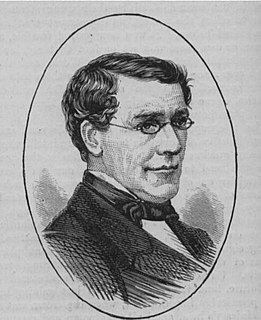BH, Bh or bh may refer to:

The Playfair cipher or Playfair square or Wheatstone-Playfair cipher is a manual symmetric encryption technique and was the first literal digram substitution cipher. The scheme was invented in 1854 by Charles Wheatstone, but bears the name of Lord Playfair for promoting its use.
SH, Sh, sH or sh may refer to:
Lithuanian orthography employs a Latin-script alphabet of 32 letters, two of which denote sounds not native to the Lithuanian language. Additionally, it uses five digraphs.
Gaj's Latin alphabet is the form of the Latin script used in Serbo-Croatian and all of its standard varieties: Bosnian, Croatian, Serbian, and Montenegrin. It was devised by Croatian linguist Ljudevit Gaj in 1835, based on Jan Hus's Czech alphabet. A slightly reduced version is used as the script of the Slovene language, and a slightly expanded version is used as a script of the modern standard Montenegrin language. A modified version is used for the romanization of the Macedonian language. Pavao Ritter Vitezović had proposed an idea for the orthography of the Croatian language, stating that every sound should have only one letter. Gaj's alphabet is currently used in Bosnia and Herzegovina, Croatia, Montenegro, and Serbia.
The four-square cipher is a manual symmetric encryption technique. It was invented by the famous French cryptographer Felix Delastelle.
The Two-square cipher, also called double Playfair, is a manual symmetric encryption technique. It was developed to ease the cumbersome nature of the large encryption/decryption matrix used in the four-square cipher while still being slightly stronger than the single-square Playfair cipher.
Ng, ng, or NG may refer to:
Th is a digraph in the Latin script. It was originally introduced into Latin to transliterate Greek loan words. In modern languages that use the Latin alphabet, it represents a number of different sounds. It is the most common digraph in order of frequency in the English language.
The Romanization of Macedonian is the transliteration of text in the Macedonian language from the Macedonian Cyrillic alphabet into the Latin alphabet. Romanization can be used for various purposes, such as rendering of proper names in foreign contexts, or for informal writing of Macedonian in environments where Cyrillic is not easily available. Official use of Romanization by Macedonian authorities is found, for instance, on road signage and in passports. Several different codified standards of transliteration currently exist and there is widespread variability in practice.
There are various systems of romanization of the Armenian alphabet.
The modern Corsican alphabet uses 22 basic letters taken from the Latin alphabet with some changes, plus some multigraphs. The pronunciations of the English, French, Italian or Latin forms of these letters are not a guide to their pronunciation in Corsu, which has its own pronunciation, often the same, but frequently not. As can be seen from the table below, two of the phonemic letters are represented as trigraphs, plus some other digraphs. Nearly all the letters are allophonic; that is, a phoneme of the language might have more than one pronunciation and be represented by more than one letter. The exact pronunciation depends mainly on word order and usage and is governed by a complex set of rules, variable to some degree by dialect. These have to be learned by the speaker of the language.
The Cyrillic script family contains a large number of specially treated two-letter combinations, or digraphs, but few of these are used in Slavic languages. In a few alphabets, trigraphs and even the occasional tetragraph are used.
A Latin-script multigraph is a multigraph consisting of characters of the Latin script.
A Latin-script alphabet is an alphabet that uses letters of the Latin script.
Catalan Braille is the braille alphabet of the Catalan language. It is very close to French Braille: it uses the 26 letters of the basic braille alphabet, plus several additional letters for ç and what are, in print, vowel letters with diacritics; these differ from their French values only in the need to accommodate the Catalan acute accent: ú, ó, í for what are in French Braille ù, œ, ì :
This page is based on this
Wikipedia article Text is available under the
CC BY-SA 4.0 license; additional terms may apply.
Images, videos and audio are available under their respective licenses.

